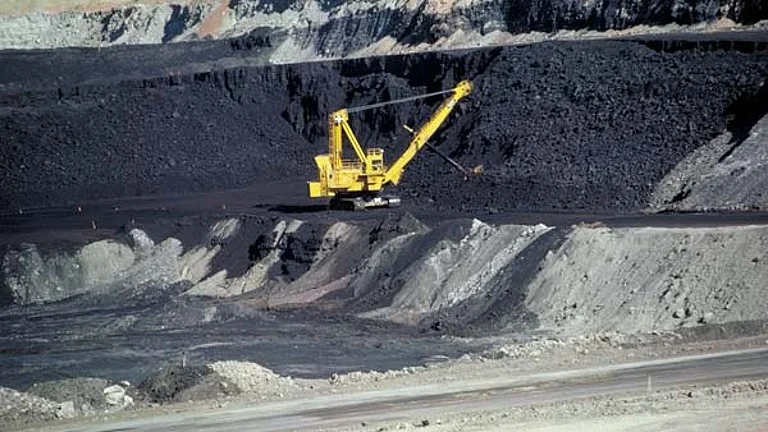In late 2023, at COP28, global leaders signed a pledge to transition away from fossil fuels in order to keep global temperature rise to 1.5°C. The large increase in renewable energy resources needed to facilitate this transition away fossil fuels will will require scaling up of the world’s production and processing of critical minerals such as lithium, cobalt, copper and rare earth elements. These strategic minerals are essential ingredients of renewable technologies like electric vehicles, solar panels, and wind turbines.
A recent report from the International Energy Agency estimates that overall demand for critical minerals will increase by a factor of 6 as the world works to achieve climate goals.
The report makes clear that there is currently a mismatch between climate ambitions and the future availability of critical minerals. Further, these supply issues will likely be compounded by the fact that these strategic minerals are spatially concentrated in a small number of countries. Indeed, China has largely cornered the critical minerals market, controlling over 60% of the global production and processing capacity. Recently, the United States and the European Union have come up with various pieces of legislation—such as the Inflation Reduction Act and the Critical Raw Materials Act – that provide billions of dollars in subsidies for increasing the domestic supply of critical minerals.
Given the projected future demand for critical minerals, last year the Indian government identified 30 strategic minerals as critical based on supply risks and resource availability. Then, it created a policy framework for securing critical minerals.
Overall, the current Indian strategy for critical minerals has two main components: develop and buy critical mineral assets overseas and develop mines to produce critical minerals in India.
On the international front, India has unleashed KABIL, a joint venture between three state-owned companies to scout for critical mineral assets overseas and then develop them. KABIL has made some progress, and has signed MoUs with Argentina for exploration of lithium and other mineral assets. KABIL is also working with Australian counterparts for securing lithium assets in Australia and Chile. In addition to KABIL, other state-owned companies like Coal India Limited (CIL) are also scouting for critical mineral assets in countries like Australia and Argentina.
On the domestic front, the Indian government has offered the auction of twenty critical mineral blocks at the end of 2023, with the ambition to auction more than 100 blocks by 2024.
While these are positive developments, the Indian blueprint on critical minerals is missing a potential game changing strategy. A novel idea that is gaining steam in the West and China is to extract critical minerals from coal waste products like fly ash, coal rejects, and acid mine drainage.
For example, the U.S. has funded numerous research and pilot projects that aim to extract rare earth elements from acid mine drainage.
Acid mine drainage occurs when water interacts with sulfide minerals in abandoned or active mining areas, leading to the release of an acidic discharge. Approximately 20,000 km of freshwater streams in the U.S. are impacted by acid mine drainage. The initial pilot projects, like the Mount Storm acid mine drainage rare earth recovery facility that is run by the West Virginia Water Research Institute, have shown such promise that players in both the public and private sectors are now working to scale production to meet the growing demand for rare earths and other critical minerals–all the while cleaning up U.S. waterways.
Such pilot projects could serve as inspiration for Indian coal companies including state-owned coal companies to develop similar ventures. Several studies in India have shown adequate concentrations of critical minerals such as rare earth metals, lithium and cobalt in acid mine drainage. For example, a study in the North Eastern coalfield shows that 714.7𝜇𝑔/𝐿 amounts of critical minerals such as rare earth elements are found in acid mine drainage.
This is comparable to the concentrations in the United States where this technology is reaching commercial stages. Another study in Jharia coalfield has shown the presence of critical miners such as Copper (32.3 𝜇𝑔/𝐿) and Nickel (17.6 (𝜇𝑔/𝐿). This shows the promising presence of critical minerals in the Indian coal fields. Among various techniques available, chemical precipitation is extensively used to extract critical elements from acid mine drainage, and it is because of their availability and less expensive treatment facility. The mechanism of recovery of critical minerals relies on the use of alkaline materials such as lime, which increases the pH so as to increase the precipitation of chemical species present in acid mine drainage.
Ministry of coal can direct agencies such as Central Mine Planning and Design Institute Ltd to collaborate with Central Institute of Mining and Fuel Research and Indian School of Mines to collect coal waste samples and quantify critical minerals. If samples are matching the standard pilot feed stock, then coal companies can create a pit head project.
Developing coal waste for critical mineral projects is an innovative way to increase India’s domestic supply of strategic minerals while making productive use of potentially harmful waste products. These projects quite literally transform potential liabilities to valuable assets. This will also create jobs and support India’s clean energy transition.
(The article is written by Sandeep Pai, Sankalp Arpit and Joey James)
(The opinions presented belong solely to the authors.)


























